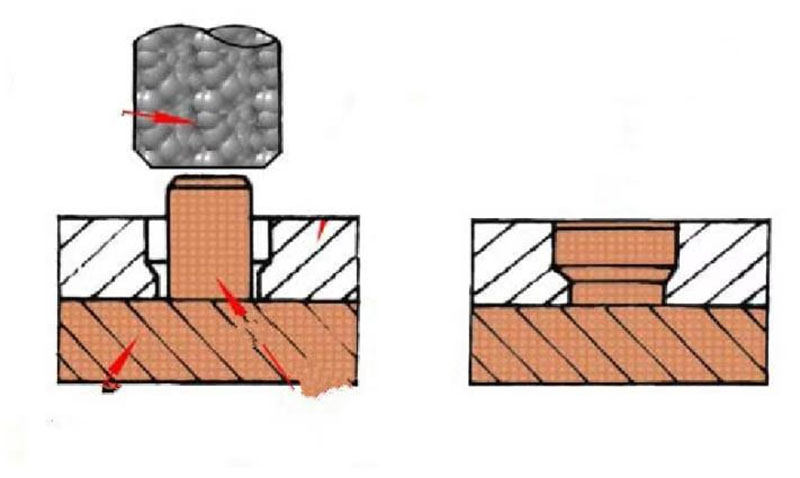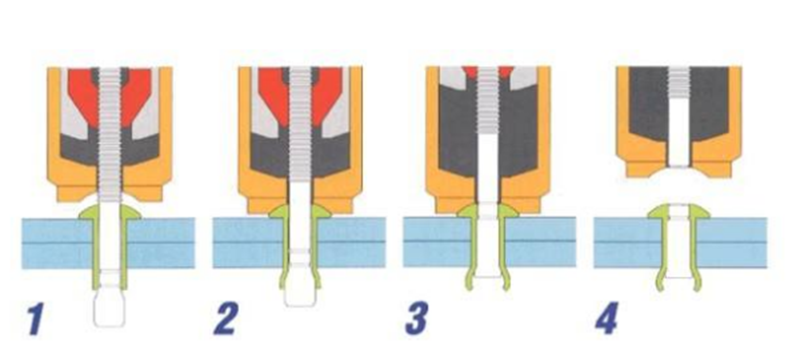Passing rivets through prefabricated holes on the riveted parts to connect two or more riveted parts together, forming an inseparable connection, is called rivet connection, abbreviated as riveting.
Riveting has the advantages of simple process equipment, seismic resistance, impact resistance, and firmness and reliability. The disadvantages are high noise during riveting, affecting workers’ health, generally bulky structure, and significant weakening of the strength of the riveted parts.
Although riveting is still the main form of connection of Light metal structures (such as aircraft structures), in the connection of steel structures, riveting is mainly used in a few occasions subject to severe impact or vibration loads, such as the connection of some crane frames. The connection of non-metallic components also adopts riveting, such as the connection between friction plates, brake belts, and brake shoes in band brakes.
The riveted part of the rivet and the riveted part together is called a riveted joint.
There are many structural forms of riveting joints, which can be divided into three types according to different work requirements:
1. Strong riveting joint; Riveting joints with strength as the basic requirement.
2. Tight riveting joint: a riveting joint with tightness as the basic requirement.
3. Strong dense riveting joint: A riveting joint that requires both sufficient strength and tightness.
 According to the different joint forms of the riveted parts, riveting joints are divided into two types: overlap and butt joints, and butt joints are also divided into single cover plate butt joints and double cover plate butt joints.
According to the different joint forms of the riveted parts, riveting joints are divided into two types: overlap and butt joints, and butt joints are also divided into single cover plate butt joints and double cover plate butt joints.
According to the number of rivet rows, it is also known as single row, double row, and multi row rivet seams.
Post time: Jul-25-2023


